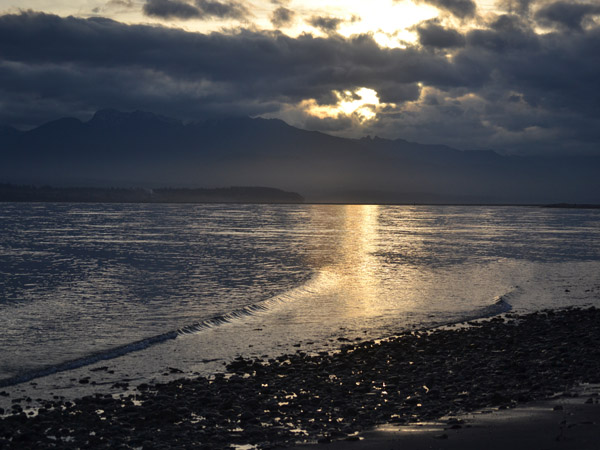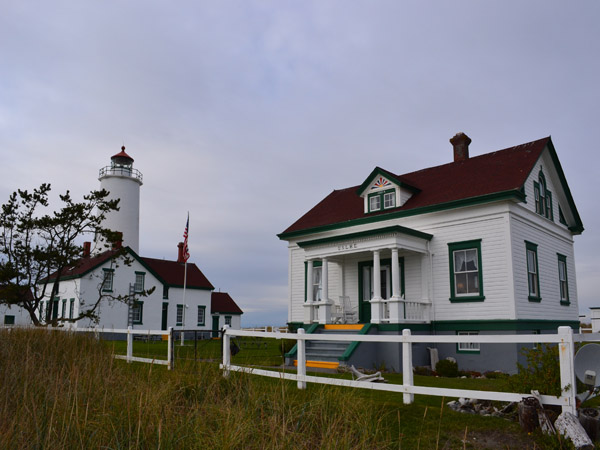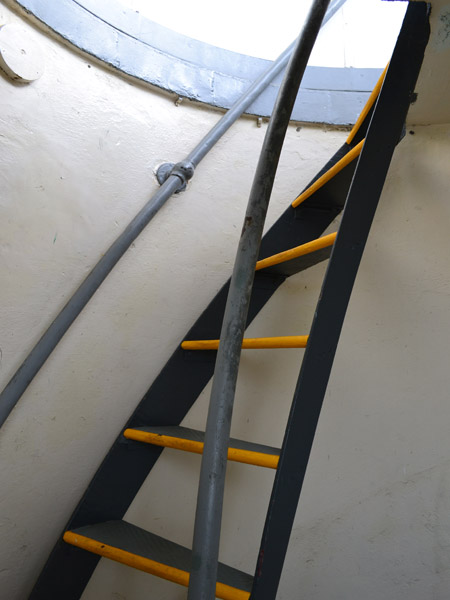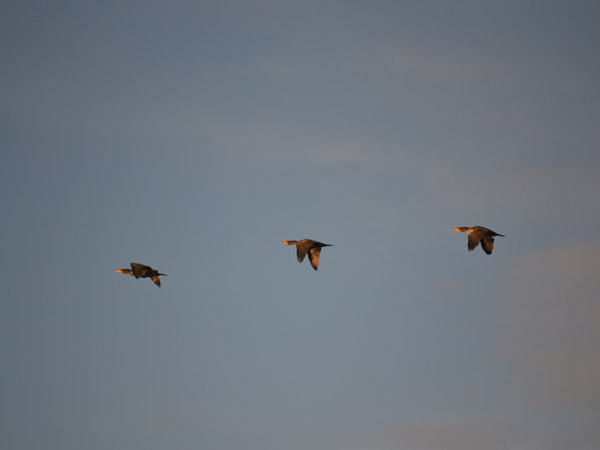
We pulled out the bird books and my husband and I concluded that these are probably cormorants. Real birders are welcome to dispute this.
Category: Dungeness
Then and Now – Nootka Rose
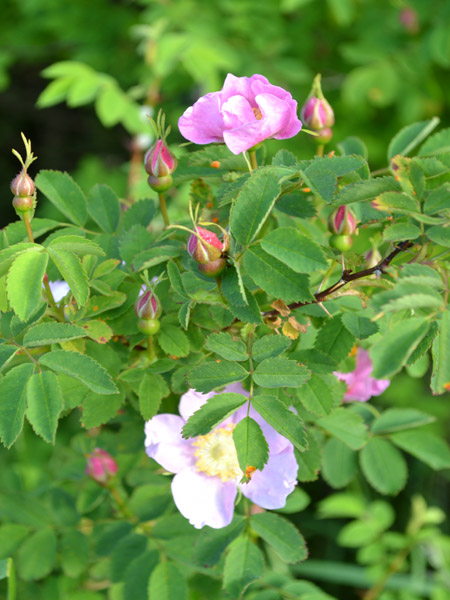
Sequim is rightfully known for its beautiful cultivated lavender, but one of my favorite native flowers is the Nootka rose. It can tolerate growing near salt water and is profuse in the Dungeness Recreation Area. Leaves first appear in spring from thorny branches. By early summer the bushes are lavish with buds and blossoms. I love the heady rose fragrance, though it’s rarely carried on the breeze unless it’s warm. The scent is usually saved for noses that get up close and personal.
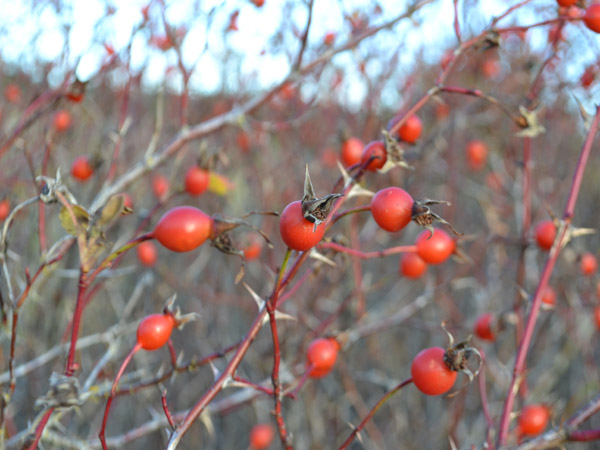
Summer rose bushes are now a sea of bright red hips. The branches have lost their leaves and look bramble-y, so characteristic of Washington in the winter. The hips, or rose berries, don’t ripen all at once, which helps provide food over a longer period for many birds, small mammals, deer, and elk. They are a good source of vitamin C for human cooks who are willing to turn them into jellies or tea.
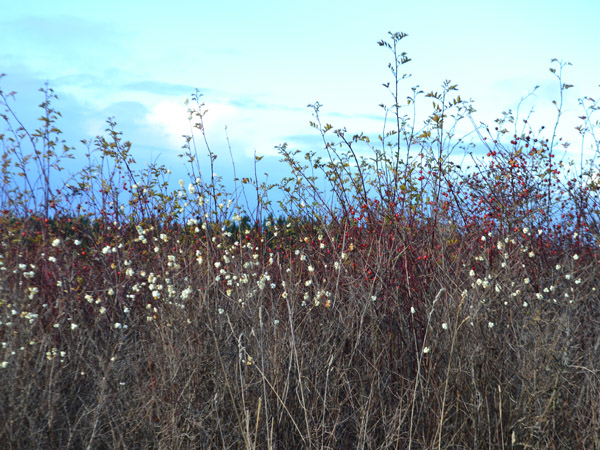
Roses readily intermingle with snowberries. This photo doesn’t do it justice. Through the winter they brighten the landscape with their red and white berries, a cheerful touch in a sea of dormant plants.
November sunset
Ken and Bill
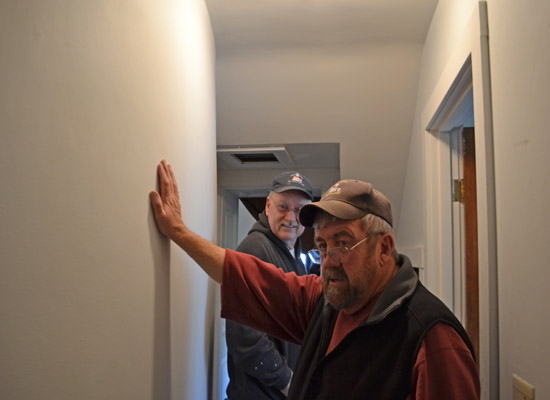
Bill (left) and Ken are two volunteer workers with the New Dungeness Light Station. While we stayed at the Light Station Bill painted a newly refurbished pump room and Ken did everything from checking a transformer to upgrading workers quarters. Bill serves on the Board of Directors of the New Dungeness Light Station Association and Ken has worked at the Station for many years. The board and workers pour love into the Light Station. It really shows.
Ken and Bill are standing in the hallway of the worker’s quarters as they take a break from painting. Ken’s hand is resting on the curved wall of the light tower.
Eagle watch
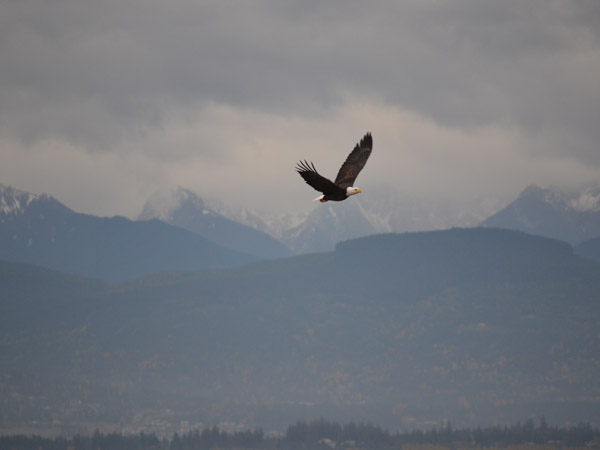
What’s not to like about staying next door to a national wildlife refuge? The New Dungeness Light Station borders on the Dungeness National Wildlife Refuge that is visited by over 250 species of birds, 41 species of land mammals, and eight species of marine mammals. We regularly saw three eagles that ranged about on the south side of the Light Station grounds and I was told by one volunteer that sightings can range up to a dozen at a time. Not too shabby!
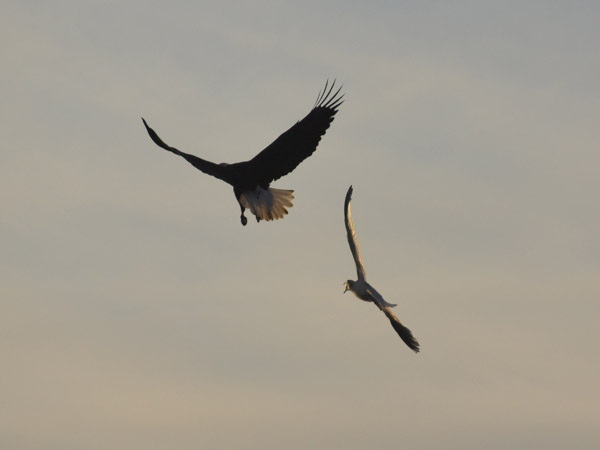
The wildlife seems to know the boundaries of the Light Station and generally kept well beyond the signs that keep visitors out of the 631 acre refuge. Our best sightings were airborne.
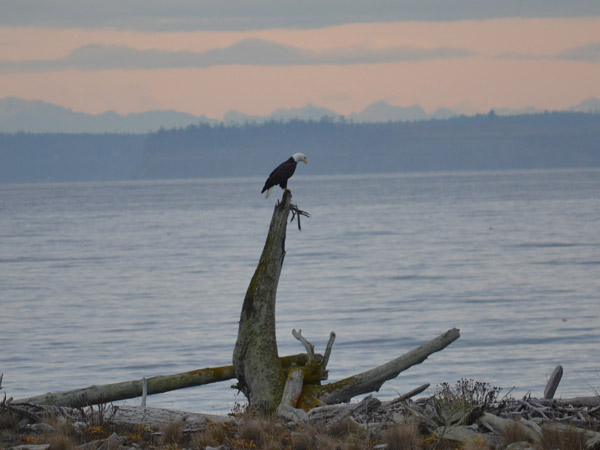
There are two favored perches beyond the boundaries of the light station, both of which made me envy the 400 mm. lenses of friends.
Keeper’s Quarters
Here are the Keeper’s Quarters at the New Dungeness Light Station. Keepers originally were all housed in rooms in the Lighthouse building. The Keepers Quarters were constructed for the Officer-in-charge and completed in 1904. Families lived there continually until the last Coast Guard keepers left in 1994. There are three bedrooms and two baths, kitchen, dining room, and comfortable living room. A full basement houses laundry facilities, a pool/ping-pong table, and storage. There is a small, cozy “library” upstairs under the center dormer that serves as a perfect spot to curl up with a good book.

The kitchen is done in a “mid-century” style. It’s well-equipped, clean, and pleasant. Keepers usually share dinners and coordinate menus before they go out to the Lighthouse. Some previous keepers posted their dinner menus in the daily log and they clearly weren’t roughing it. My vegetarian chocolate chili suddenly seemed terribly modest.
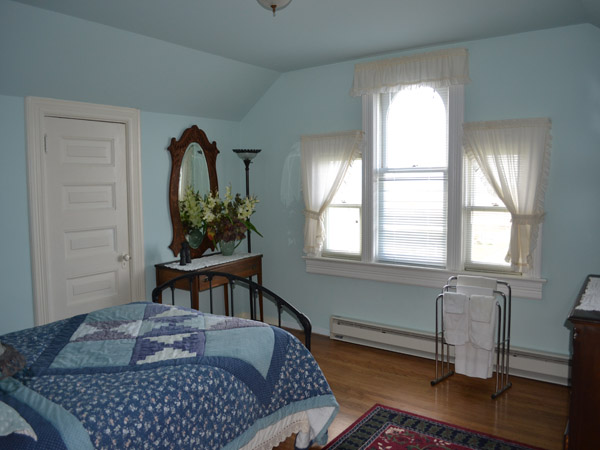
Here’s one of the three bedrooms. It looks directly onto the lighthouse building. Other rooms face the Strait of Juan de Fuca, Dungeness Bay and the Olympic Mountains, or an unobstructed view of the Cascade Mountains to the east. Despite the building’s age, continual use for over 100 years, and location in a harsh environment it is in very good condition. I’ve stayed in newer coastal buildings that soak up the salt air and exude dankness. This one is clean and cheerful.
Keepers at the New Dungeness Light Station pay a weekly per person fee to stay here. They bring their own food, and perform volunteer tasks such as leading lighthouse tours, cleaning, watering, and mowing the lawn. It’s not a free ride, but is a way to give back for the privilege of an extraordinary experience and contributes to the efforts that keep the Light Station in its laudable condition. It appears to be a well run, successful model for historic preservation.
The New Dungeness Lighthouse Station is located in the middle of the Dungeness National Wildlife Refuge. Tomorrow I’ll show you three of our eagle sightings.
Up you go
I didn’t count them but I recall being told there were 74 stairs up to the light room at the New Dungeness Lighthouse. The Lighthouse sees about 5,000 visitors per year, many of whom walk ten miles roundtrip on the Dungeness Spit to get there. Two visitors who came during our stint ran the last mile and several were into their 60s and 70s. It helps renew my faith in the fitness of U.S. citizens.
This open ladder is the final ascent into the light room of the Station.
Tomorrow we’ll look at the Keeper’s Quarters.
